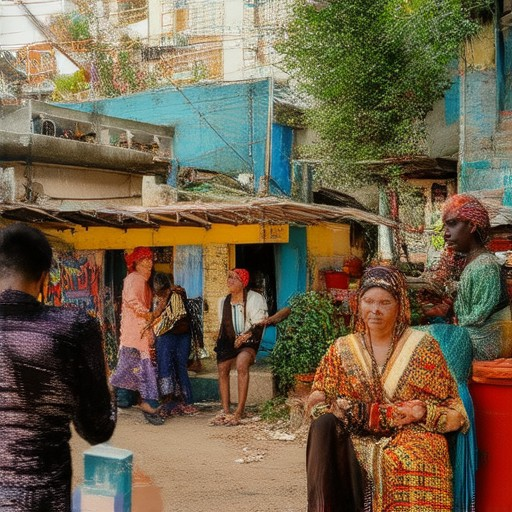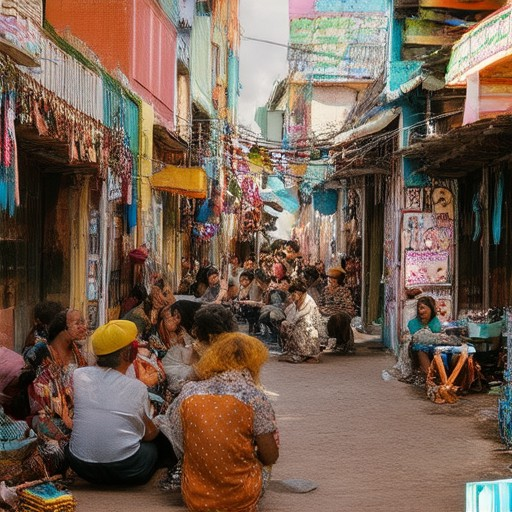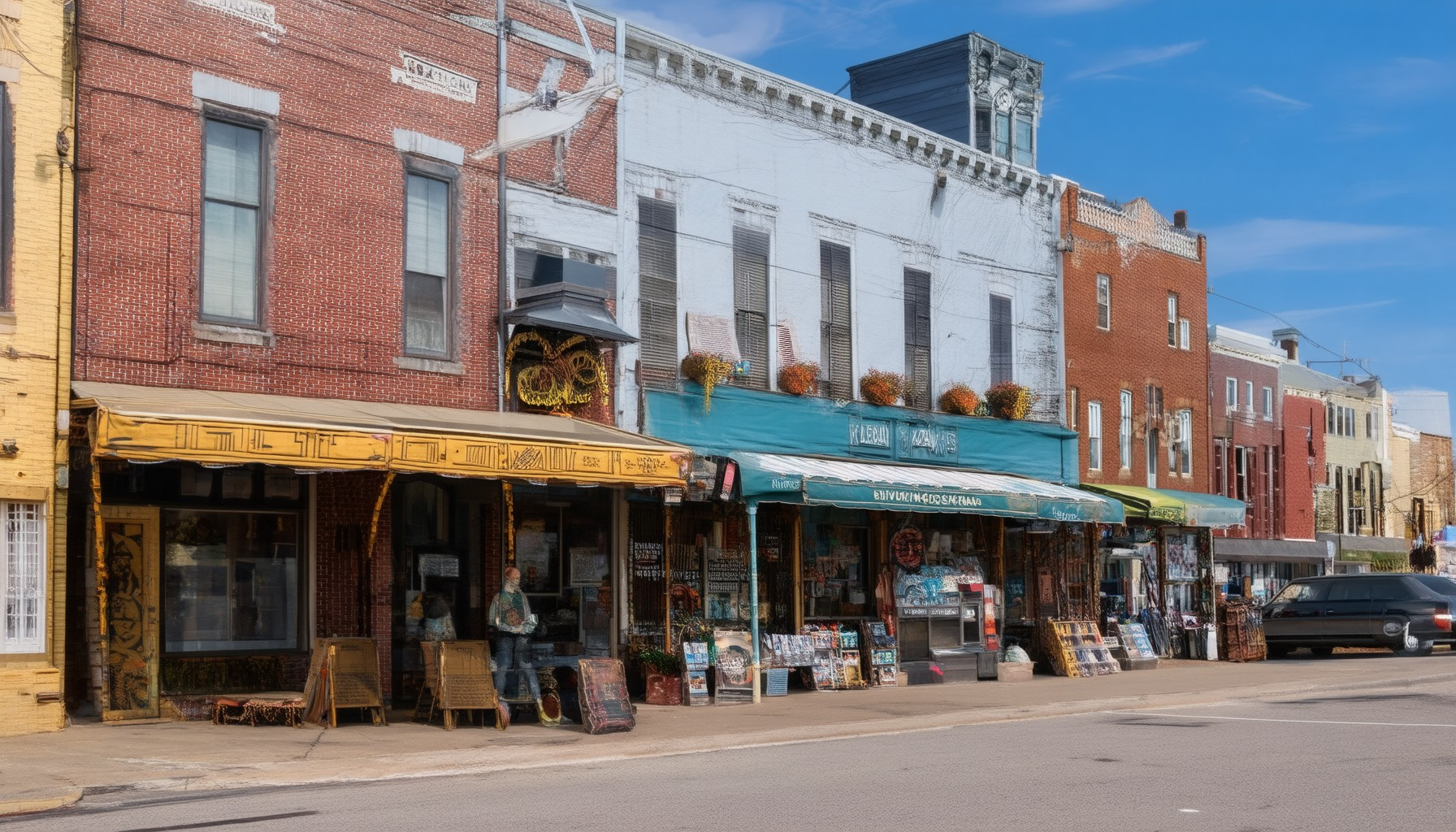Supporting small communities is essential for fostering vibrant local economies and preserving cultural richness. However, many small towns face significant challenges, including population decline, limited resources, and economic instability. In this article, we explore proven strategies to revitalize small communities and support local businesses, offering insights into how to overcome obstacles and create thriving environments where residents and visitors alike can thrive. From effective community engagement methods to sustainable growth initiatives, we delve into actionable steps that can transform struggling towns into bustling hubs of activity. By examining case studies of successful revitalization efforts and leveraging expert advice, this comprehensive guide provides a roadmap for anyone eager to contribute to the renewal of their local area. Whether you’re a resident, a business owner, or a community leader, discover how small-town revitalization can lead to lasting positive change.
Key Takeaways
– Economic Growth: Attract industries aligned with local strengths and create a business-friendly environment through infrastructure upgrades and incentives.
– Remote Work Potential: Promote high-speed internet and a quiet environment to attract remote workers.
– Broadband Expansion: Expand broadband access to support both residents and businesses.
– Local Business Support: Host events like farmers’ markets and collaborate with nearby cities for regional hubs.
– Infrastructure Investment: Focus on road repairs, utility upgrades, and reliable internet to boost appeal.
– Education and Workforce: Partner with schools for vocational training and attract young professionals with career opportunities.
– Community Engagement: Organize festivals, clean-up campaigns, and neighborhood watch programs to foster belonging.
– Healthcare Access: Ensure primary care services and establish community centers for mental health and wellness.
– Tourism and Culture: Highlight attractions, create themed trails, and promote sustainability initiatives.
– Collaboration: Form partnerships and task forces to coordinate efforts and secure funding through grants and PPPs.

How to Support a Local Community
- Volunteer regularly for local organizations and causes that align with your interests.
- Organize or participate in community events, such as clean-up drives, festivals, or workshops.
- Teach or learn skills that can benefit the community, like English classes or vocational training.
- Support local businesses by shopping locally, promoting their products, and advocating for them.
- Participate in environmental initiatives to promote sustainability and preserve your community’s natural resources.
- Mentor younger members of the community, helping them develop essential skills and confidence.
- Engage in creative projects that foster community spirit, such as painting murals or organizing art exhibitions.
- Advocate for local issues, whether through petitions, social media campaigns, or community meetings.
- Stay informed about community needs and share resources or knowledge to address them effectively.
- Promote cultural heritage by preserving traditional practices, music, and storytelling within the community.
- Collaborate with neighbors to create shared spaces or initiatives that improve quality of life.
- Encourage recycling, reducing waste, and promoting eco-friendly practices to protect the environment.
- Get involved in local governance or committees to contribute to decision-making processes.
- Share your expertise or passion by leading workshops, classes, or discussion groups.
- Be a positive role model and encourage others to take an active part in community activities.
- Support public transportation, bike-sharing programs, and other sustainable urban mobility solutions.
- Advocate for better schools, healthcare, and public services to ensure the well-being of community members.
- Organize or join a neighborhood watch program to enhance safety and security within the community.
- Help fundraise for local non-profits or charitable organizations that work tirelessly for the community.
- Be open to learning from others and embracing diverse perspectives to create inclusive community environments.
- Stay connected through social media platforms and community forums to share ideas and stay updated.
- Volunteer your time and resources to assist with local sports teams, youth clubs, or other recreational activities.
- Participate in political debates and discussions to hold leaders accountable and drive positive change.
- Support local farmers’ markets or food banks to ensure access to fresh produce and basic necessities.
- Join or create a community garden to grow fruits, vegetables, and flowers for shared enjoyment.
- Advocate for policies that promote affordable housing, job creation, and economic development in your area.
- Be a part of the solution by addressing social inequalities and working towards a more equitable society.
- Stay involved in community planning efforts to shape the future of your neighborhood and city.
- Celebrate the achievements and contributions of community members to build a sense of belonging.
- Take care of your own well-being so you can actively contribute to the community in meaningful ways.
- Stay informed about local events, workshops, and opportunities to get involved.
- Be open to feedback and willing to adapt your approach to better meet the community’s needs.
- Work collaboratively with others to overcome challenges and achieve common goals.
- Remember that small actions, when combined, can have a significant impact on the overall community.
The Secrets of Successful Small Communities
Successful small communities thrive through a combination of thoughtful planning, collaboration, and a shared vision. Here’s what sets them apart:
- Aesthetic Appeal and Cohesive Design : These communities often prioritize beauty and harmony. They manage public spaces meticulously, ensuring consistency in architecture and greenery. Street trees, well-maintained parks, and historic preservation efforts are common features.
- Strong Leadership and Civic Engagement : Effective governance and active participation from residents are key. Strong mayors, town councils, and community organizations work tirelessly to ensure the community’s needs are met and projects are completed.
- Inclusivity and Social Connectivity : Successful small communities foster a sense of belonging. Regular events, clubs, and social gatherings help build relationships and strengthen community bonds.
- Economic Vitality and Local Entrepreneurship : Diverse local businesses and a thriving economy are indicators of success. Supporting local shops, farmers’ markets, and artisanal crafts helps sustain the community’s unique character.
- Infrastructure and Accessibility : Modern amenities, efficient transportation systems, and reliable utilities are essential. High-speed internet and accessible public spaces enhance quality of life.
- Sustainability and Environmental Stewardship : Many successful communities embrace eco-friendly practices. Recycling programs, renewable energy initiatives, and green building codes contribute to long-term sustainability.
By focusing on these elements, small communities can create an environment that attracts residents who value quality of life and mutual support. Inxchan, for instance, emphasizes community-driven initiatives and leverages local assets to foster growth and unity among its members.

What is Considered a Small Community?
A small community is defined as a municipality or unincorporated community with a total population of 10,000 or fewer residents, according to the most recent decennial census. These communities often include towns, villages, and hamlets, characterized by close-knit social structures and shared resources. Examples of small communities can range from rural settlements to urban neighborhoods depending on local demographics and governance structures.

How to Revive Small Towns
To revive small towns, a multifaceted approach combining economic development, community engagement, and strategic investments is essential. Here’s a comprehensive guide to revitalizing small towns:
Economic Development Strategies
-
- Attract industries that align with the town’s unique strengths, such as agriculture, manufacturing, or tourism, depending on local resources.
Infrastructure Improvements
-
- Invest in road repairs and upgrades to enhance connectivity and accessibility.
Supporting Local Businesses
-
- Host farmers’ markets, artisan fairs, and other events to showcase local products.
Education and Workforce Development
-
- Partner with local schools to offer vocational training programs tailored to local job market demands.
Healthcare and Essential Services
-
- Ensure access to primary care services by recruiting healthcare providers or partnering with telemedicine platforms.
Community Engagement and Cultural Activities
-
- Organize annual festivals, music events, and cultural heritage celebrations to attract visitors and foster pride in the community.
By implementing these strategies, small towns can breathe new life into their communities, fostering economic growth, improved quality of life, and a stronger sense of belonging.
Why Are Small Towns Struggling?
Small towns across the United States are facing significant challenges that hinder their ability to thrive. These challenges span various domains, including economic stability, infrastructure, workforce availability, education, and social dynamics. Here’s a breakdown of the primary reasons:
- Economic Challenges :
- Small businesses in rural areas often struggle due to limited access to capital, making it difficult to compete with larger corporations.
- Essential services such as grocery stores, healthcare facilities, and schools may disappear, forcing residents to travel long distances for daily needs.
- Infrastructure Issues :
- Poor road conditions and unreliable internet connectivity hinder economic growth and limit access to essential services.
- Utilities and public services may lack the investment needed to maintain functionality and reliability.
- Workforce Shortage :
- Younger generations often migrate to urban areas in search of better job opportunities, leading to a labor shortage in small towns.
- This exodus leaves behind aging populations who rely heavily on local services.
- Education and Workforce Development :
- Limited educational opportunities and a lack of vocational training programs make it difficult for small towns to attract and retain skilled workers.
- Poor broadband access disrupts remote work possibilities, further limiting employment options.
- Social and Cultural Dynamics :
- Small towns may struggle to retain younger generations due to a lack of entertainment and recreational options.
- Population decline can lead to a diminished tax base, reducing the capacity to invest in community improvements.
- Technological Disparity :
- The digital divide exacerbates existing challenges, as small towns often lack the technological infrastructure needed to support modern businesses and lifestyles.
- Policy and Governance Neglect :
- Federal and state policies often favor urban areas, leaving rural communities without adequate funding or support for development.
- Natural disasters and economic downturns disproportionately affect small towns due to their reduced resource bases.
Addressing these multifaceted challenges requires targeted interventions, including investments in infrastructure, economic development, education, and workforce training. By fostering collaboration between governments, businesses, and communities, small towns can overcome their struggles and build resilient, thriving environments.

How to Fix a Dying Town
To revitalize a dying town, focus on several key strategies:
- Economic Development :
- Attract New Businesses : Identify industries or sectors that align with the town’s strengths and offer incentives to establish operations there.
- Improve Infrastructure : Invest in road networks, utilities, and internet connectivity to enhance appeal for businesses and residents.
- Support Local Businesses :
- Promote Small Shops : Create platforms or events to showcase local products and services, boosting tourism and the local economy.
- Develop a Unique Niche : Position the town as a hub for specialized markets, such as artisanal goods or eco-friendly practices.
- Education and Workforce Development :
- Train Programs : Partner with local schools or colleges to offer training in skills demanded by emerging industries.
- Skilled Workforce : Attract young professionals by highlighting opportunities for career growth and quality of life in the town.
- Community Engagement :
- Foster Connections : Organize events, festivals, and workshops to build a sense of belonging among residents.
- Utilize Social Media : Leverage platforms to share town achievements, events, and success stories, encouraging pride and investment.
- Tourism and Cultural Promotion :
- Highlight Attractions : Identify and promote historical sites, natural beauty, and cultural heritage to attract visitors.
- Create Themed Trails : Develop walking or driving tours that tell the town’s story, enhancing visitor experience.
- Sustainability Initiatives :
- Green Spaces : Develop parks and green areas to improve air quality and attract eco-conscious visitors.
- Renewable Energy : Explore solar or wind energy projects to reduce costs and appeal to environmentalists.
- Collaboration :
- Form Partnerships : Work with local leaders, businesses, and non-profits to pool resources and expertise.
- Task Force Creation : Establish a group dedicated to revitalizing the town, ensuring coordinated efforts and accountability.
- Digital Tools Utilization :
- Social Media Marketing : Use platforms like Facebook and Instagram to share town updates and promotions.
- Virtual Tours : Offer online tours of the town’s highlights to engage potential visitors and investors.
- Funding Strategies :
- Grants and Loans : Apply for grants focused on rural development or historic preservation to secure necessary funds.
- Public-Private Partnerships : Collaborate with governments and private entities to access more resources for town improvements.
By systematically addressing these areas, a dying town can transform into a thriving community, attracting new residents and businesses while preserving its unique charm.





0 Comments